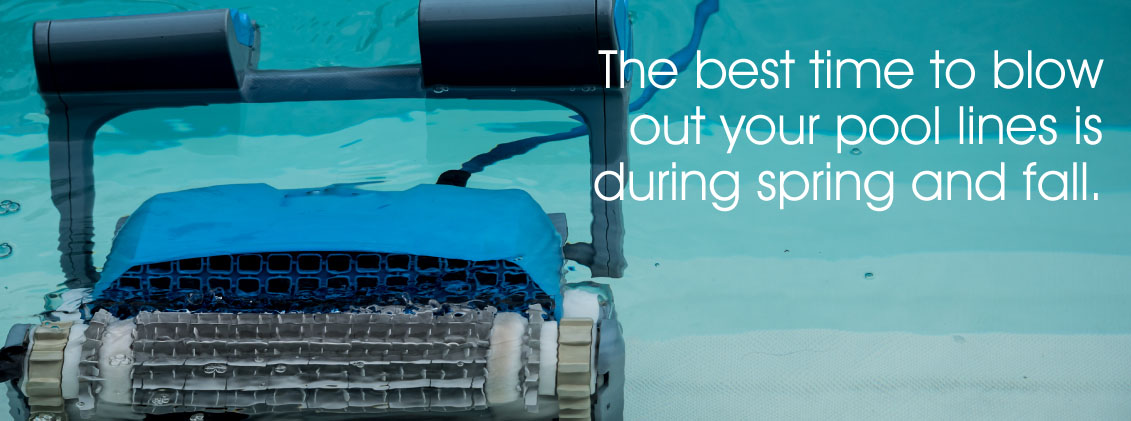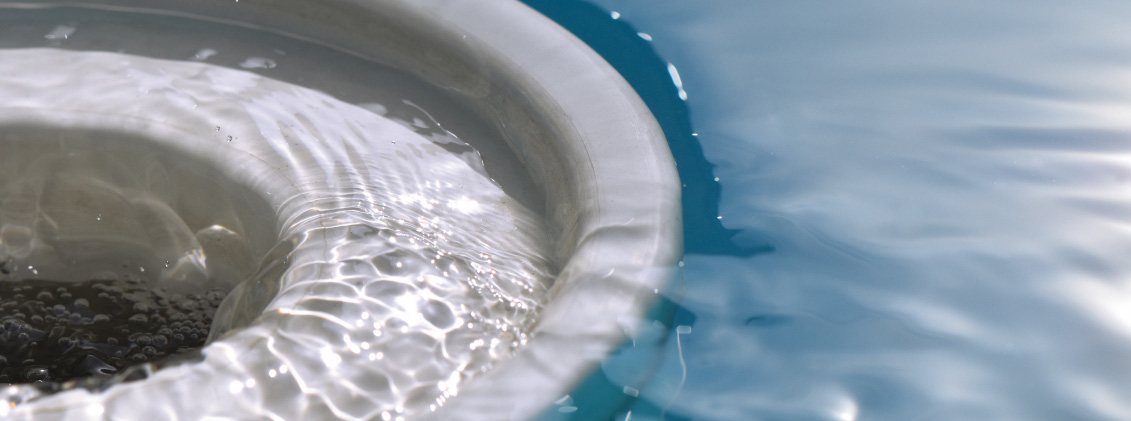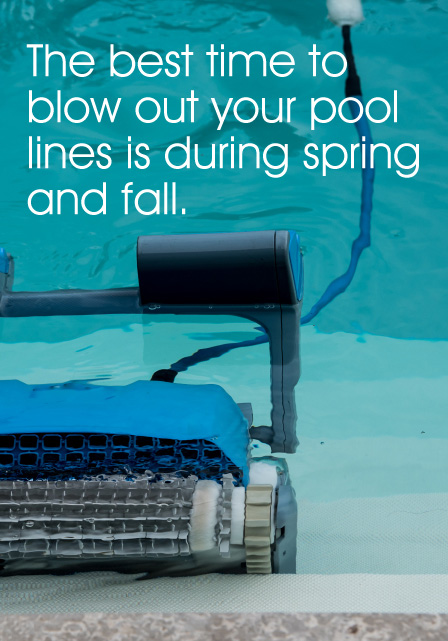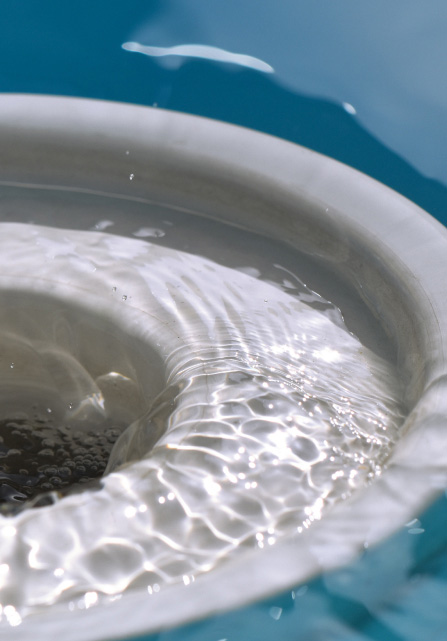Blowing Out Pool Lines - DIY Or Call A Professional
Pool lines can tend to get clogged up over time, which is why it is recommended to call a professional if you want to get them removed. If you choose to do this yourself, it's important that you're as prepared as possible for what will actually happen. So let's look at some of the steps involved in blowing out your pool lines and see how much time it'll take.

Why blow out pool lines?
Blowing out pool lines is one of the most important things you can do to keep your pool running smoothly. Blowing out a line will remove debris, contaminants and other impurities that can build up in the line causing problems with water flow or even leaks.
The good news is that blowing out a line only takes about an hour, so it’s something you can do yourself if you have time on your hands!
Preparation to blow out the pool lines
Here are some tips that will help you prepare to blow out the pool lines:
- Make sure the pool is empty and clean. If you have a skimmer basket that needs to be cleaned out, do so now.
- Check for leaks in your plumbing system by taking a torch down each line. Look for water leaking from it or from around its connection point with another pipe or piece of equipment (like a pump).
- If there are any signs of leaking pipes, check them over again before starting work on blowing out lines. It’s possible someone may have forgotten about an old patch job that still needs replacing! This can be especially frustrating when we’re dealing with metal equipment like pumps or valves that don’t show up well under normal lighting conditions. Remember to look at both sides of these components when inspecting them closely!
- You might want to consider draining off some water from inside the pool so that you can better see what needs fixing first.
Equipment needed to blow out pool lines yourself
If you decide to blow out your pool lines yourself, a few tools will be necessary. You will need:
- A pool vacuum
- A pool brush
- A net (or two) to catch any debris that may fall into the water while blowing out the lines. This could include leaves and twigs, as well as other small objects that can get sucked up by the vacuum. If this is done too quickly, it could cause damage to your pump or filter system.
- An optional piece of equipment is a fish net that hangs over the top of the skimmer basket so debris doesn’t clog its intake area. The best option here would be one with suction cups at each end so they can easily attach themselves onto any surface area within reach–including walls! Another advantage of using these types of nets is that they allow for quick access. If something gets stuck in there during operation time, then simply removing the said item from inside won’t take very long at all!

Blowing out pool lines
The suction side
- Use a hose with a nozzle attachment.
- Make sure you have enough water pressure.
- Use a pool vacuum to suck out debris from the suction side of your pool as well as any other places where debris may have been collected. This can be around your skimmer basket or pump intake tube (if applicable). It’s also important not to forget about vacuuming out any leaves that may have fallen into your pool. They will decrease its surface area and create algae growth problems later down the road!
- Brush off the walls of your swimming pool with an electric broom until it looks clean again. This will remove any dirt stuck in crevices or cracks where it can’t be seen easily by hand scrubbing alone.
The equipment
The equipment used to clean pool lines is a combination of a vacuum and a hose. This can be purchased from your local hardware store, or you may have one in your home already (if so, great!).
Vacuum: You should purchase an electric-powered vacuum cleaner that has attachments for cleaning both sides of the hose at once. Using this type of machine is much easier than using manual vacuums because it automatically sucks dirt particles back into its base. This prevents them from blowing around inside the pool area and into other areas, such as windows and buildings nearby.
Hose: Your next step will be connecting this new electronic piece of equipment with its corresponding cleaning tool. This process involves connecting each end of the hose directly to either side’s male connector piece. Be sure not only that each end fits snugly but also that there isn’t any unnecessary slack present between them. If there were two inches too much space between two pipes, then water could leak out easily.

The best time of year to blow out your pool lines
The best time of year to blow out your pool lines is during the spring and fall. The pool is not in use, so it’s a good time to do it.
The weather conditions are usually dry during these seasons, which means less risk of damage to the surface of your pool. It also makes it easier for you to blow out all of those pesky little line things!
It's usually better to call in a professional for this kind of work
When it comes to pool cleaning, the professionals know what they’re doing. They have the right equipment and know how to avoid damaging your pool or pipes in the process. They can do it faster and more efficiently than you can—so it’s recommended that you don’t try this at home by yourself!
Conclusion
We hope that this article has given you some good advice on how to blow out your pool lines. If you’re still not sure, or if you want to learn more about pool maintenance, it’s best to contact a professional. It might cost you more, but the most important thing is that your pool is clean and safe for swimming!
Blowing Out Pool Lines - DIY Or Call A Professional
Pool lines can tend to get clogged up over time, which is why it is recommended to call a professional if you want to get them removed. If you choose to do this yourself, it's important that you're as prepared as possible for what will actually happen. So let's look at some of the steps involved in blowing out your pool lines and see how much time it'll take.

Why blow out pool lines?
Blowing out pool lines is one of the most important things you can do to keep your pool running smoothly. Blowing out a line will remove debris, contaminants and other impurities that can build up in the line causing problems with water flow or even leaks.
The good news is that blowing out a line only takes about an hour, so it’s something you can do yourself if you have time on your hands!
Preparation to blow out the pool lines
Here are some tips that will help you prepare to blow out the pool lines:
- Make sure the pool is empty and clean. If you have a skimmer basket that needs to be cleaned out, do so now.
- Check for leaks in your plumbing system by taking a torch down each line. Look for water leaking from it or from around its connection point with another pipe or piece of equipment (like a pump).
- If there are any signs of leaking pipes, check them over again before starting work on blowing out lines. It’s possible someone may have forgotten about an old patch job that still needs replacing! This can be especially frustrating when we’re dealing with metal equipment like pumps or valves that don’t show up well under normal lighting conditions. Remember to look at both sides of these components when inspecting them closely!
- You might want to consider draining off some water from inside the pool so that you can better see what needs fixing first.
Equipment needed to blow out pool lines yourself
If you decide to blow out your pool lines yourself, a few tools will be necessary. You will need:
- A pool vacuum
- A pool brush
- A net (or two) to catch any debris that may fall into the water while blowing out the lines. This could include leaves and twigs, as well as other small objects that can get sucked up by the vacuum. If this is done too quickly, it could cause damage to your pump or filter system.
- An optional piece of equipment is a fish net that hangs over the top of the skimmer basket so debris doesn’t clog its intake area. The best option here would be one with suction cups at each end so they can easily attach themselves onto any surface area within reach–including walls! Another advantage of using these types of nets is that they allow for quick access. If something gets stuck in there during operation time, then simply removing the said item from inside won’t take very long at all!

Blowing out pool lines
The suction side
- Use a hose with a nozzle attachment.
- Make sure you have enough water pressure.
- Use a pool vacuum to suck out debris from the suction side of your pool as well as any other places where debris may have been collected. This can be around your skimmer basket or pump intake tube (if applicable). It’s also important not to forget about vacuuming out any leaves that may have fallen into your pool. They will decrease its surface area and create algae growth problems later down the road!
- Brush off the walls of your swimming pool with an electric broom until it looks clean again. This will remove any dirt stuck in crevices or cracks where it can’t be seen easily by hand scrubbing alone.
The equipment
The equipment used to clean pool lines is a combination of a vacuum and a hose. This can be purchased from your local hardware store, or you may have one in your home already (if so, great!).
Vacuum: You should purchase an electric-powered vacuum cleaner that has attachments for cleaning both sides of the hose at once. Using this type of machine is much easier than using manual vacuums because it automatically sucks dirt particles back into its base. This prevents them from blowing around inside the pool area and into other areas, such as windows and buildings nearby.
Hose: Your next step will be connecting this new electronic piece of equipment with its corresponding cleaning tool. This process involves connecting each end of the hose directly to either side’s male connector piece. Be sure not only that each end fits snugly but also that there isn’t any unnecessary slack present between them. If there were two inches too much space between two pipes, then water could leak out easily.

The best time of year to blow out your pool lines
The best time of year to blow out your pool lines is during the spring and fall. The pool is not in use, so it’s a good time to do it.
The weather conditions are usually dry during these seasons, which means less risk of damage to the surface of your pool. It also makes it easier for you to blow out all of those pesky little line things!
It's usually better to call in a professional for this kind of work
When it comes to pool cleaning, the professionals know what they’re doing. They have the right equipment and know how to avoid damaging your pool or pipes in the process. They can do it faster and more efficiently than you can—so it’s recommended that you don’t try this at home by yourself!
Conclusion
We hope that this article has given you some good advice on how to blow out your pool lines. If you’re still not sure, or if you want to learn more about pool maintenance, it’s best to contact a professional. It might cost you more, but the most important thing is that your pool is clean and safe for swimming!



